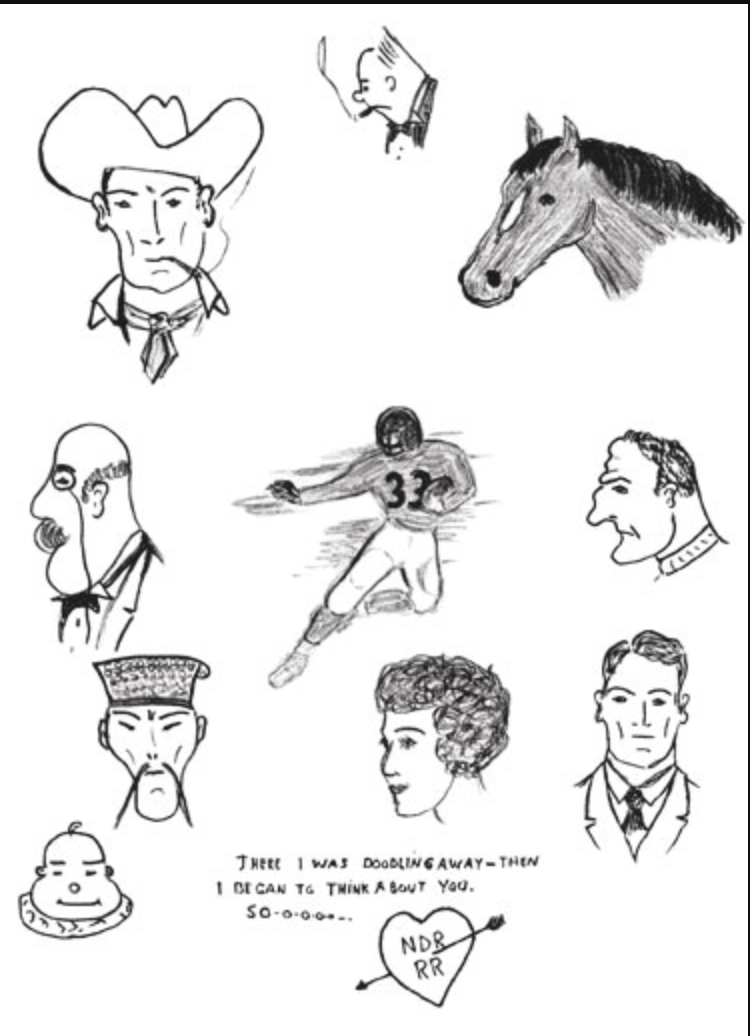Need to get through some tough stuff? Put pencil to paper.
26 U.S. Presidents cannot be wrong, right?
Can you believe it: The world has spent more than eight months in this pandemic. Whether you've been stricken with the virus, lost a job or find yourself helping your kids navigate distance learning, chances are you have direct experience with the coronavirus. Even if your experience with the virus is less direct, then you are still adapting to a changed, charged and politicized landscape. Coping, let alone thriving, in 2020 has been anything but easy.
Need a momentary relief from the pressures of getting through another day? That respite may be sitting right in front of you in the form of a piece of paper and a pen. The mental health benefits of drawing are myriad; even just a few minutes spent doodling is the perfect way to take a breather, get a mood boost and stoke those creative flames.

Ready, set, doodle
Starting with the simplest form of drawing, doodling is more than something a person does halfway through a meeting they have checked out of. These spontaneous drawings can relieve psychological distress. The act of putting pen to paper can make it easier for people to tend to matters at-hand. As published in the Harvard Health Blog, Dr. Robert Burns, the former director of the Institute for Human Development at the University of Seattle, believes that doodles can reveal what is going on in the unconscious. Burns' doodle research found men typically doodle geometric shapes while women doodle faces or parts of faces like eyes and lips.

With this in mind, your doodles provide a glimpse into what lies beneath. The Harvard Health Blog, published in December of 2016, goes on to mention that 26 of 44 U.S. presidents doodled. Theodore Roosevelt doodled animals, Ronald Regan doodled cowboys and football players, and John F. Kennedy doodled dominoes. One can assume the doodling helped these leaders of the free world focus and make some difficult decisions.
"It's the process, not the product"
Going beyond the doodle and picking up a brush, or getting more involved in some drawing and sketching, carries benefits when it comes to coping as well.
Not a self-described skilled artist? The product isn't the point of the exercise.
Formally and informally, art is used to help people make sense of their world. This summer, I caught up with Ronie George. Ronie is a retired middle-school art teacher who has taken it upon herself to teach a few veterans about the joy they might find in creating. On Mondays, Ronie shows up at Every Third Saturday, a Minneapolis-based non-profit focused on helping veterans with basic needs. Typically, she will set up in the back of a coffee shop that Every Third Saturday operates. Because 2020 is, well, 2020, she now sets up on the sidewalk at the corner of East 54th Street and 43rd Avenue to spend a few hours helping guide her new students through their projects.
Improved mental health
Maria Cohut, PhD, a contributor for Medical News Today says, "A lot of research in the medical field has actually suggested that art — and, more specifically, being creative — is, in fact, quite useful for our mental and physical well-being."
Drawing, painting or molding objects from clay has been scientifically proven to help people to deal with different kinds of trauma. In a comprehensive article on The Connection Between Art, Healing, and Public Health, Heather L. Stuckey and Jeremy Nobel say that “art helps people express experiences that are too difficult to put into words."
“Artistic self-expression,” they continue, “might contribute to maintenance or reconstruction of a positive identity.”
Whether doodling or more purposefully creating a drawing or painting, the act of doing so can make you feel better. Less daunting than meditation, the rhythm of the pencil or brush strokes can refocus your attention and soothe your thoughts. Finding you have the ability to illustrate whatever is on your mind can provide positive reinforcement. In these times of often personal local, regional and global crises, that sheet of paper in front of you beckons you, compelling you to draw your world and take a break from fretting about it.
And don't worry about what you draw. Take it from Ronnie: "Do you know that you have drawn every line that was in the Mona Lisa? You just haven't put it together as the Mona Lisa because everything is either a straight or curved line."
After all, every one of us needs to get "our stuff out, whether it's joy or really bad crap, whatever is inside of you.... You don't have to be more than you are."

This story is made possible by the Arts and Cultural Heritage Fund and the citizens of Minnesota.
Between a pandemic, killer bees and global protests over racism-fueled police brutality, 2020 has been one for the record books - and Minneapolis artist Keith Pille has found a way to cope: He spends 30 minutes every day sketching a single cartoon cell that he shares on Twitter. His inspiration? A police blotter in Iowa City. Read all about it.
Photographer Layne Kennedy is known for his editorial assignment work that sends him around the globe to capture the perfect shot for the likes of National Geographic Traveler, Outside and LIFE. But while sheltering in place, he’s focused on a newer craft: making stunning wooden bowls from fallen trees in his Minneapolis neighborhood.
When news of the coronavirus became more worrisome, Tia Keobounpheng picked up a pen. A jewelry artist by trade, Keobounpheng returned to a simple form of expression when she needed to calm herself – drawing. And now she creates coloring sheets for others to download for free or for a small donation.
